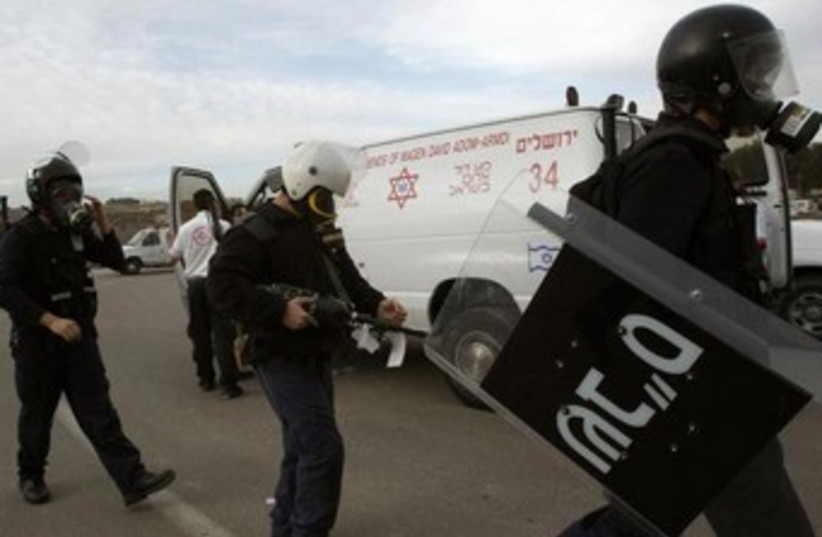When Shawshank Redemption’s Andy Dufresne successfully dug a tunnel out of his prison cell with a small rock hammer for 19 years to escape from jail through sewage pipes, it seemed like a Hollywood moment where one needed to suspend the laws of reality.
In a flair of movie-making humor, his poster of actress Raquel Welch had covered up his handiwork until it was too late.
But then again sometimes the truth can be stranger than fiction.
In Israel early Monday morning not one, but six top security prisoners escaped from the country’s high-security Gilboa Prison using some similar tactics.
The prisoners reportedly may have removed a less secure panel from their cell or dug their own tunnel over several months using a spoon (or some combination of these tactics) and eventually escaped through the sewage system.

How could this happen in real life?
The question becomes even harsher when we add in that a similar escape from the same section of the prison almost succeeded in 2014, and the concrete which was supposed to be added to reinforce the cells was only partially added.
So part of the answer is that no one seriously thought the prisoners would actually get out, so they ignored the vulnerabilities exposed by the attempted escape in 2014 and did only a partial fix.
The Israel Prison Service must now undertake a comprehensive reinforcement program using concrete anywhere that there might be a weak link in their prison cells.
But this prison break could have been stopped at several other points, which means there was a litany of failures.
In 2014, the escape was stopped simply because the prison did proper searches and uncovered the prisoners’ tools and cell phones earlier on in the process.
All indications are that in recent months, prison guards have been more intimidated by security prisoners and stayed more hands-off.
It is unclear if this has occurred because of the coronavirus, because of the chaos in Israel surrounding the May Gaza War, or if the issue predates these events.
In any case, prison guards need to be able to fully inspect prisoners and their cells – whether they are security prisoners or not.
There has been criticism already that the six prisoners who were rooming together should never have been allowed in the same room.
A careful evaluation should be taking place to prevent particularly dangerous prisoners from being able to coordinate such plans.
Besides these standard rooming and inspection issues, there was clearly a breakdown in prison intelligence.
The above failures relate to targeted activities any solid prison takes to catch isolated problems, but a breakout this large means that broader intelligence at the prison must be a bust.
In fact, the prison did not even reveal the breakout itself, only learning about it from farmers who spotted suspicious persons roaming the nearby area hours later.
All of this means that the prison guard tower lookouts failed in their role and that there were insufficient additional layers of security to catch someone who might get past the first layer.
Some have noted that a patrol car might have caught escapees lucky enough to breach their cells.
And there is speculation that the escapees had outside assistance and help from a smuggled-in illegal cell phone.
Though right now this is only speculation, there have been numerous cases in recent years of illegal cell phones being smuggled into prisons – and the prison was not using a mechanism it has to jam such cell phones at the time of the breakout.
When Andy Dufresne dug his way out of prison, he was a fictional, misunderstood, innocent hero who never belonged in jail and went on to live a quiet life at a beach house.
All of the reports on Monday were about whether the six real-life convicted terrorists were fleeing to rejoin terror movements for another day or whether they might try to perpetuate an imminent new terror attack.
The striking intrigue and similarities to Shawshank Redemption should not detract from the severity of this event – and how quickly the failures need to be fixed.
